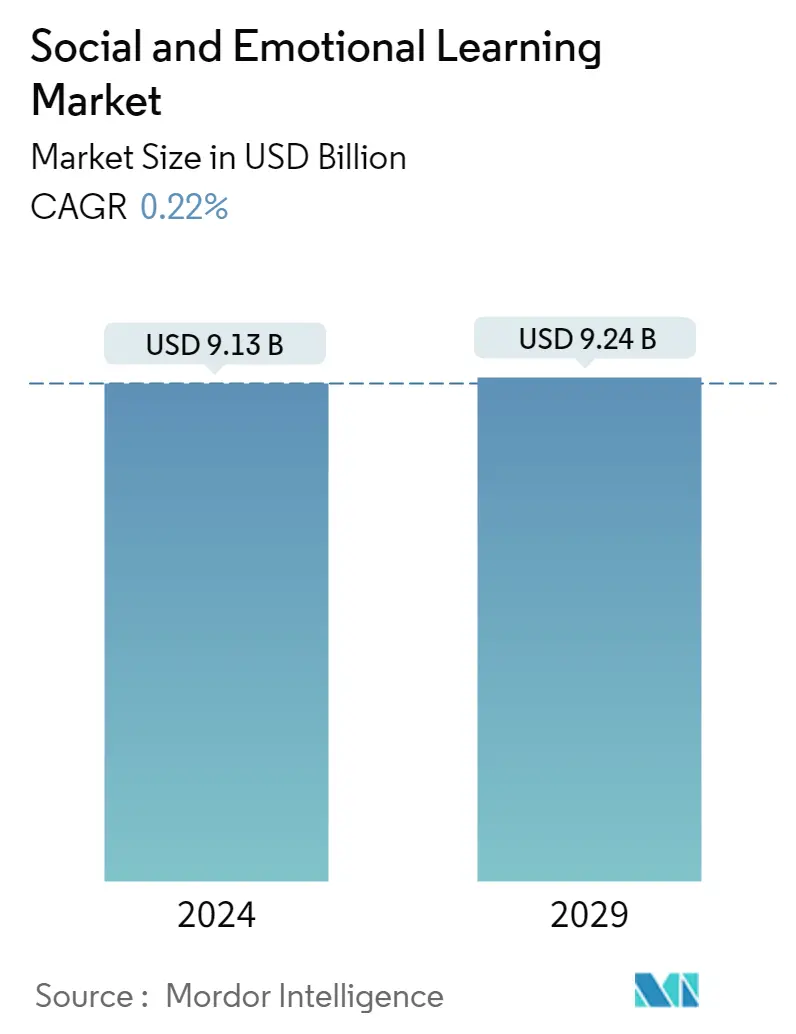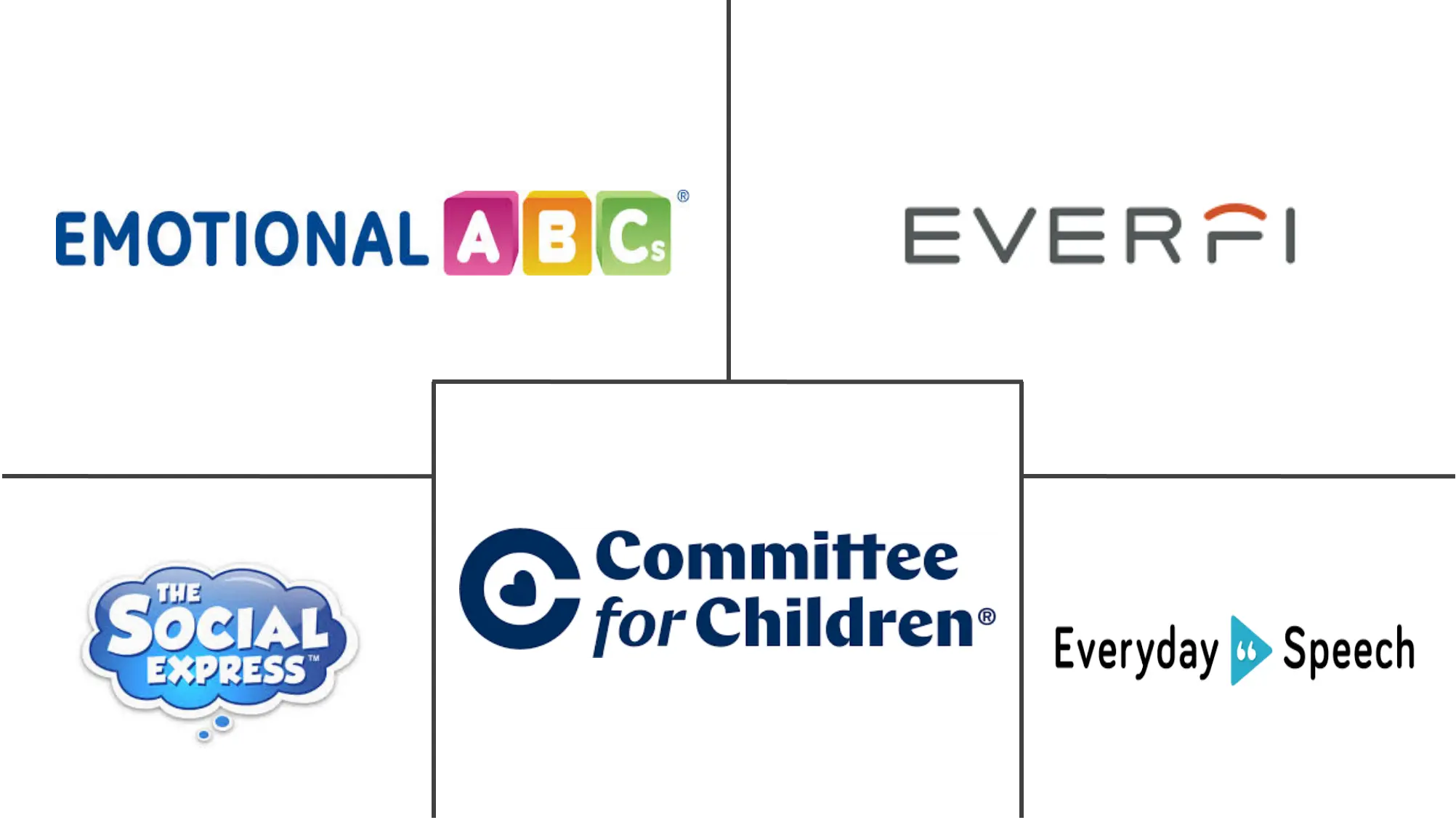Market Size of Social and Emotional Learning Industry

| Study Period | 2019 - 2029 |
| Market Size (2024) | USD 9.13 Billion |
| Market Size (2029) | USD 9.24 Billion |
| CAGR (2024 - 2029) | 0.22 % |
| Fastest Growing Market | Asia Pacific |
| Largest Market | North America |
Major Players
*Disclaimer: Major Players sorted in no particular order |
Need a report that reflects how COVID-19 has impacted this market and its growth?
Social & Emotional Learning (SEL) Market Analysis
The Social and Emotional Learning Market size is estimated at USD 9.13 billion in 2024, and is expected to reach USD 9.24 billion by 2029, growing at a CAGR of 0.22% during the forecast period (2024-2029).
With an increasing number of states, provinces, and countries closing learning institutions in the wake of the COVID-19 pandemic, almost 70% of the world's students are currently not attending school, per a UNESCO study of last year. The Commonwealth of Learning (COL) has improved in transmitting its expertise and resources to associated stakeholders to ensure that learning is open to all.
- Social-emotional learning is essential to a well-rounded education, and various research shows that it helps with academic success among adopters. According to a study conducted by CASEL that includes findings from 213 school-based universal social and emotional learning (SEL) programs involving 270,034 kindergartens through high school students, evidence-based SEL programs produce a wide variety of positive outcomes for students, from improved attitudes to decreased behavioral issues to increased academic performance.
- Multiple governments and associations globally are instrumental in promoting SEL adoption as a part of the core curriculum. Federal policy in the US plays a key role in creating conditions that support the statewide and districtwide implementation of SEL so all students can benefit.
- In March last year, in the US, Congressman Tim Ryan introduced the Social and Emotional Learning for Families (SELF) Act on International SEL Day, authorizing a competitive grant program to increase the capacity of teachers and school leaders to work with families.
- Additionally, the decline in student well-being following school closures has made the need for connection and social-emotional recovery a crucial and excellent area for growth. For instance, the Committee for Children, a supplier of social-emotional learning (SEL) curricula based on research, announced an increase with the new digital offering by releasing the Second Step Elementary digital program, a fully web-based curriculum for Grades K-5.
- Besides, the value of noncognitive skills as per the Perry Preschool program led to improvements in behavior and academic motivation to reduce the long-term effects on crime and employment. Also, children's inadequate levels of social and emotional functioning have been attributed to a rise in multiple public health problems (e.g., substance abuse, obesity, and violence).
- With students' well-being declining since the closure of schools, the need for connection and social-emotional recovery has become a critical and prime opportunity for expansion. For example, in March last year, the Committee for Children, a provider of research-based social-emotional learning (SEL) curricula, announced an expansion with the new digital offering by releasing the Second Step Elementary digital program, a fully web-based curriculum for Grades K-5.
- The COVID-19 outbreak resulted in students shifting to online learning mode over the last couple of years. This has resulted in different challenges for students and educators worldwide. Educators faced challenges balancing personal lives from quickly adapting to remote learning mode. They were overwhelmed with stress, trauma, and burnout, according to key findings from the last year's State of the US Teacher Survey, by RAND Corporation.
